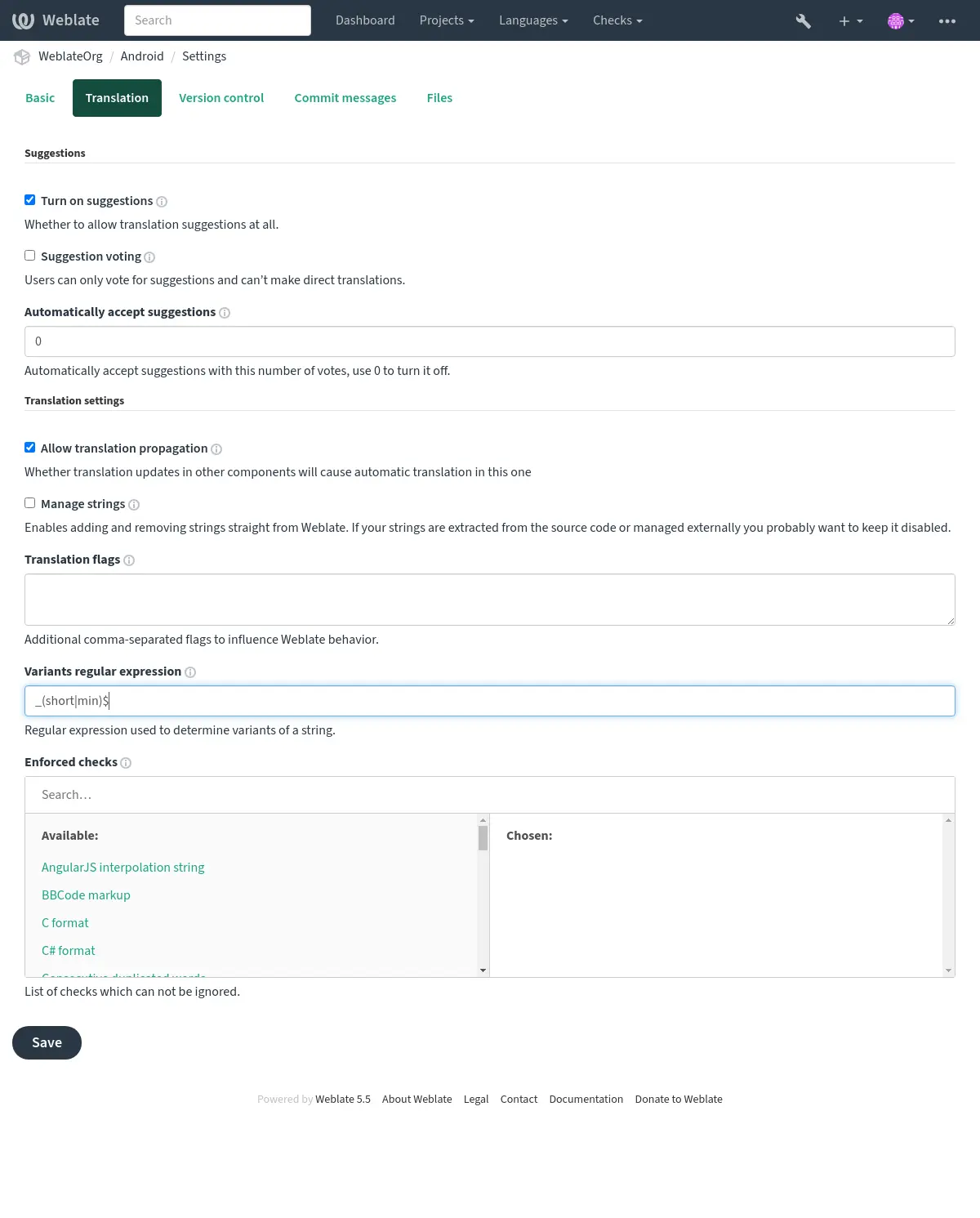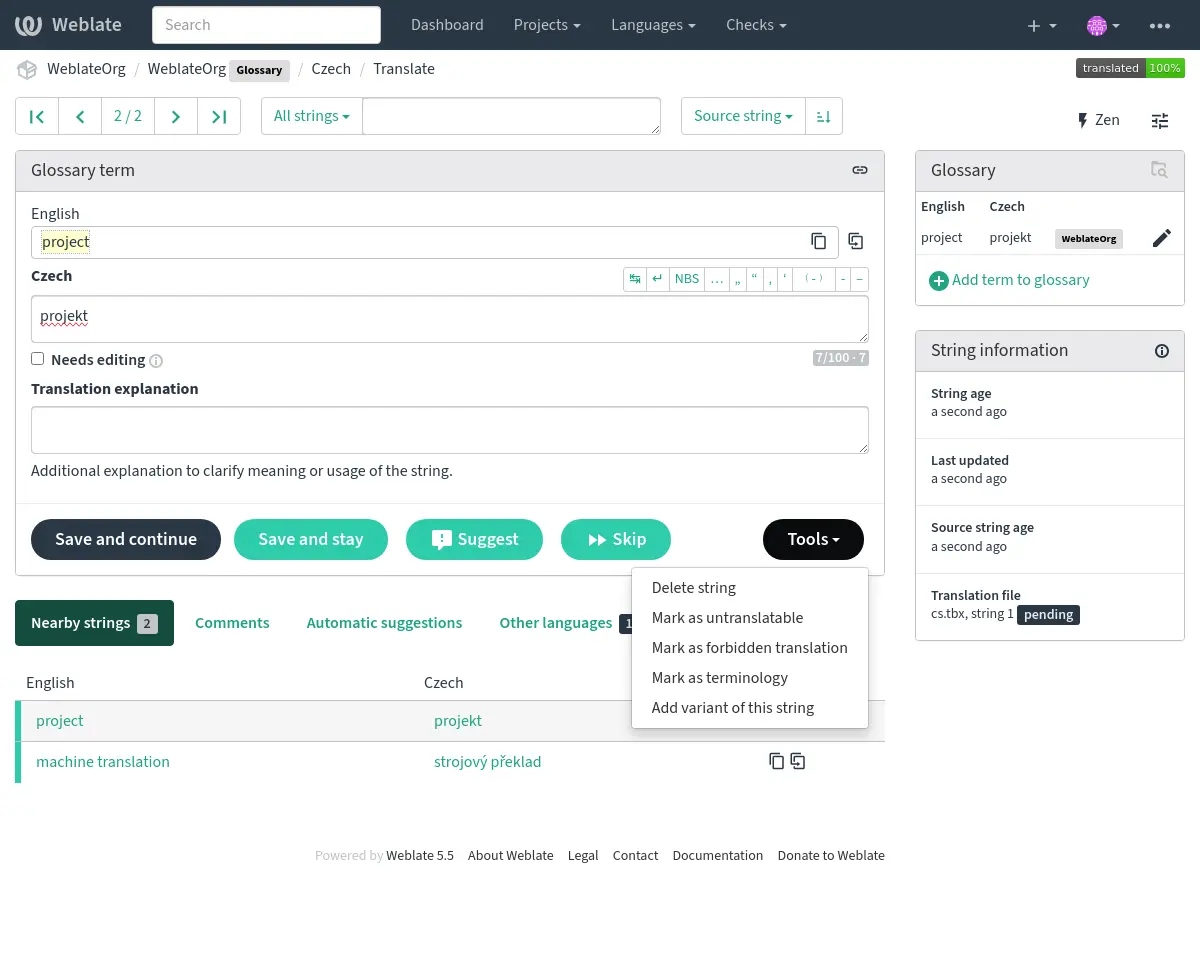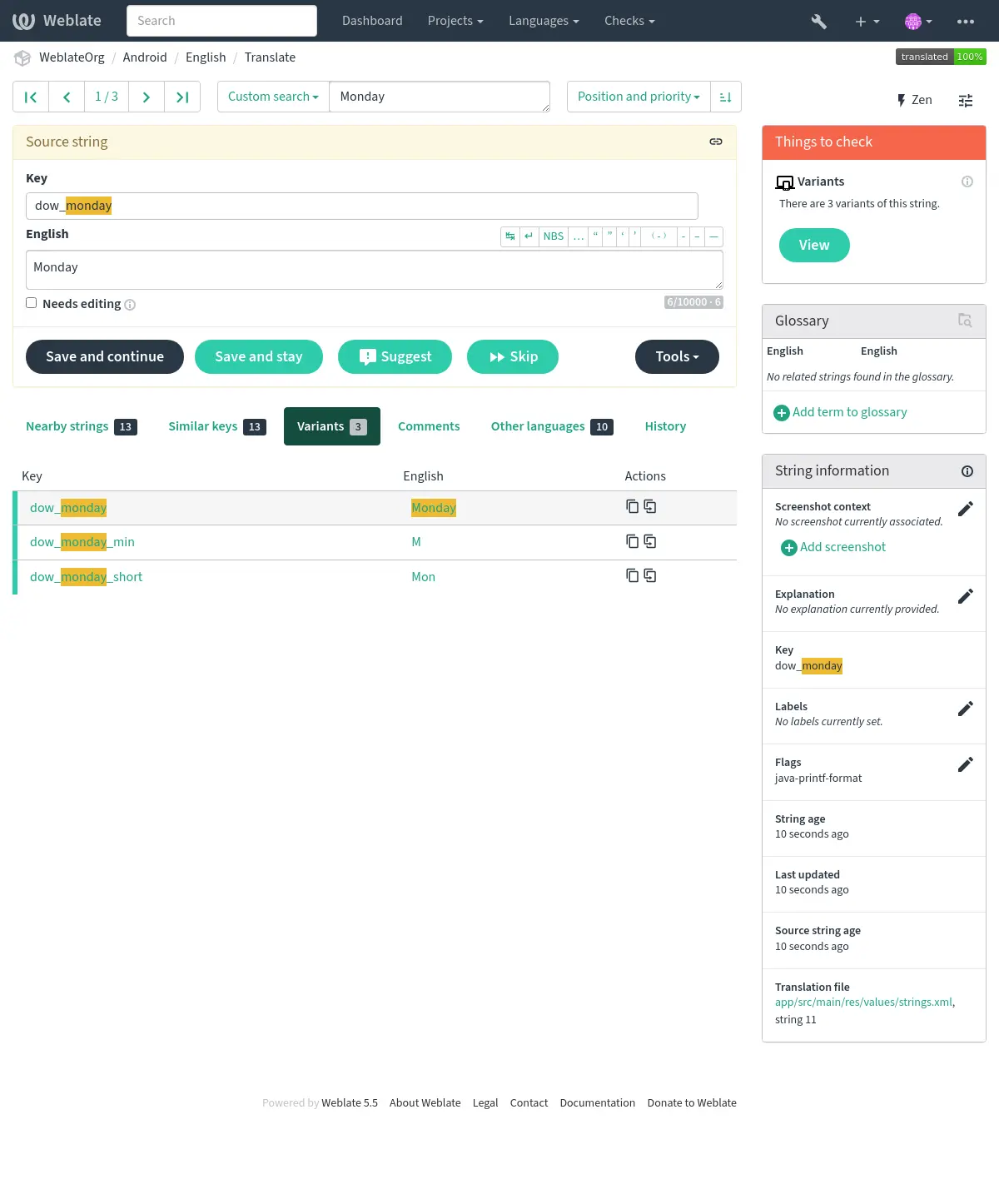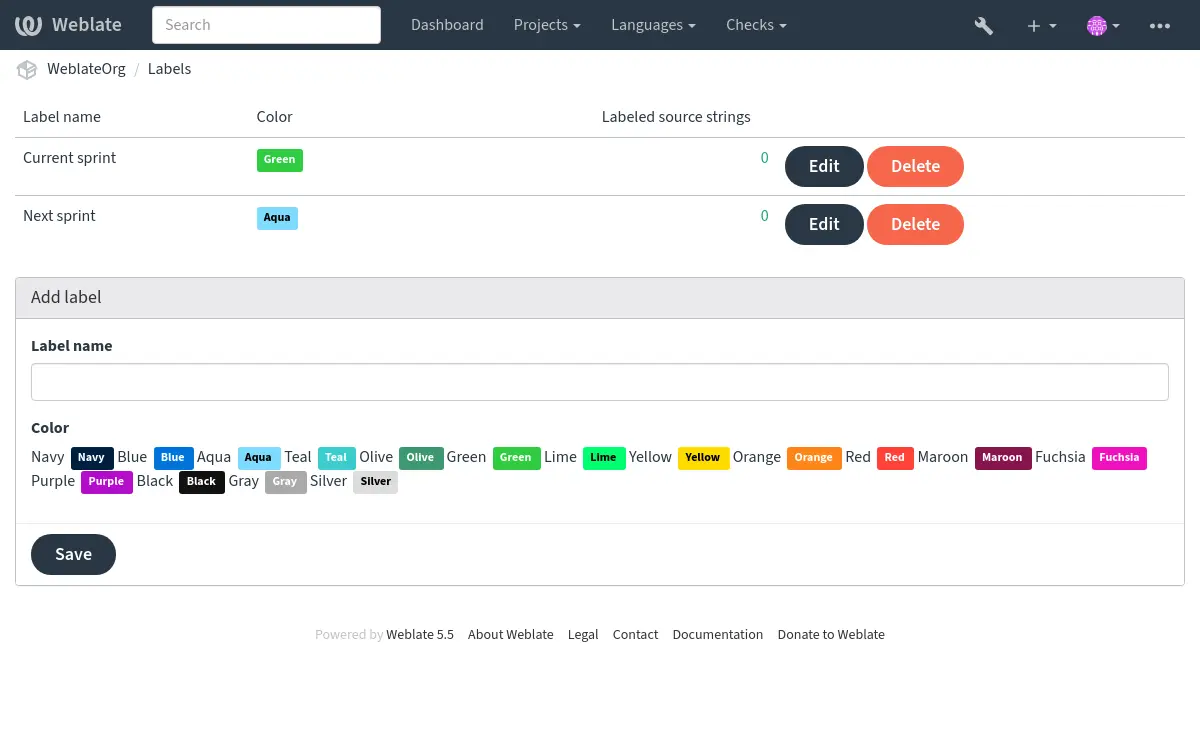Zarządzanie tłumaczeniami¶
Dodawanie nowych ciągów¶
New strings can be made available for translation when they appear in the base file, called Szablon dla nowych tłumaczeń (see Konfiguracja komponentu). If your file format doesn’t require such a file, as is the case with most monolingual translation flows, you can start with empty files.
Dodawanie nowych tłumaczeń¶
New languages can be added right away when requested by a user in Weblate, or a notification will be sent to project admins for approval and manual addition. This can be done using Dodawanie nowego tłumaczenia in Konfiguracja komponentu.
Some formats expect to start with an empty file and only translated strings to be included (for example Zasoby z ciągami Androida), while others expect to have all keys present (for example GNU gettext PO (Portable Object)). The document-based formats (for example Format OpenDocument) start with a copy of the source document and all strings marked as needing editing. In some situations this really doesn’t depend on the format, but rather on the framework you use to handle the translation (for example with Plik JSON).
When you specify Szablon dla nowych tłumaczeń in Konfiguracja komponentu, Weblate uses this file to start new translations. Any existing translations is removed from the file when doing so.
When Szablon dla nowych tłumaczeń is empty and the file format supports it, an empty file is created where new strings are added once they are translated.
The Styl kodu języka allows you to customize language code used in generated filenames. Additionally, any mappings defined in Aliasy językowe are applied in reverse.
Zobacz także
Dodawanie nowego tłumaczenia, Szablon dla nowych tłumaczeń, Styl kodu języka, Kod języka, Aliasy językowe, Parsowanie kodów językowych
Informacja
If you add a language file in connected remote repository, respective translation is added to the component when Weblate updates local repository.
More info on the repository update settings can be found on the Aktualizacja repozytoriów.
Usuwanie istniejących tłumaczeń¶
Languages, components, or the projects they are in, can be removed (deleted from Weblate and remote repository if used) from the menu Manage ↓ Removal of each project, component, or language.
Initiating the Removal action shows the list of components to be removed. You have to enter the object’s slug to confirm the removal. The slug is the project’s, language’s, or component’s pathname as it can be seen in the URL.
If you want to remove just some specific strings, there are following ways:
Manually in the source file. They will be removed from the translation project as well upon Weblate’s repository update.
Added in version 4.5.
In Weblate’s UI via button Tools ↓ Remove while editing the string. This has differences between file formats, see: Zarządzaj ciągami
Informacja
If you delete a language file in connected remote repository, respective translation will be removed from the component when Weblate updates local repository.
More info on the repository update settings can be found on the Aktualizacja repozytoriów.
Warianty ciągów¶
Variants are useful to group several strings together so that translators can see all variants of the string at one place.
Podpowiedź
Abbreviations (shortened forms, contractions) are a good example of variants.
Automated key based variants¶
You can define regular expression to group the strings based on the key of monolingual translations in the Konfiguracja komponentu:

In case the Key matches the expression, the matching part is removed to generate root key of the variant. Then all the strings with the same root key become part of a single variant group, also including the string with the key exactly matching the root key.
The following table lists some usage examples:
Przypadek użycia |
Wariant wyrażenia regularnego |
Dopasowane klucze tłumaczenia |
|---|---|---|
Identyfikacja sufiksów |
|
|
Identyfikacja linii |
|
|
Ręczne warianty¶
Added in version 4.5.
You can manually link specific strings using variant:SOURCE flag. This can
be useful for bilingual translations which do not have keys to group strings
automatically, or to group strings which keys are not matching, but
should be considered together when translating.
The additional variant for a string can also be added using the Tools while translating (when Zarządzaj ciągami is turned on):

Informacja
The variant source string has to be at most 768 characters long. This is a technical limitation due to compatibility with MySQL database.
Zobacz także
Warianty podczas tłumaczenia¶
The variant is later grouped when translating:

Etykiety ciągów¶
Split component translation strings into categories by text and colour in the project configuration.

Podpowiedź
Labels can be assigned to units in Dodatkowe informacje o ciągach źródłowych by bulk editing, or using the Edycja zbiorcza add-on.